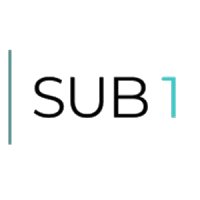B2B Sales KPIs: The Ultimate Checklist for Modern Sales Leaders
If you’re working in a scaling B2B sales team, you must track KPIs (Key Performance Indicators). They’re the only way to measure how well your sales team is performing.
They don’t just help you measure performance, they show you where to focus, what to improve, and how to drive consistent growth. Whether you’re scaling an outbound function, optimising pipeline, or refining team performance, the right sales metrics keep everyone accountable and aligned.
In this guide, we’ll break down the most critical B2B sales KPI benchmarks to track in 2025, how to set them, and why they matter.
Let’s start 👇
Pipeline KPIs
Pipeline metrics help teams monitor deal progress through the sales funnel and flag potential bottlenecks. They are some of the best B2B sales KPIs for determining your company’s financial performance and the goals tied to it.
1. Total pipeline value
A foundational B2B sales metric. This shows the total value of all active deals. It’s a leading indicator of future revenue and a must-have for planning and forecasting.
How to improve your sales pipeline?
Use Cognism’s intent and signal data to focus reps on accounts most likely to convert. 👇

Head of Cloud Sales @Ultima

2. Pipeline coverage ratio
This KPI tells you how much pipeline you have compared to your quota. A healthy ratio is usually around 3:1, depending on your close rate and sales cycle.
🔥Tip: Too low? Your top-of-funnel isn’t strong enough. Too high? Reps may not be qualifying well.
3. Win rate
The percentage of deals closed compared to the total number of opportunities is a vital sales KPI for assessing team effectiveness. In B2B SaaS, win rates often range from 15% to 30%.
How do you improve your sales win rate using intent data?
To improve your sales win rate using intent data, focus on identifying and prioritising accounts actively researching solutions like yours.
Use these buyer signals to personalise outreach, align sales and marketing efforts on high-intent leads, and time follow-ups for maximum impact. Intent data also helps accelerate deal cycles by revealing where prospects are in their journey and highlighting when to re-engage or disqualify.
When you concentrate your efforts on in-market buyers, you increase conversion rates and close more deals, faster.
4. Total open opportunities
The number of active deals an AE is working on.
🔥Tip: Healthy pipelines usually balance volume with progression.
5. Opportunities moved to proposal
Opportunities where a proposal has been sent. This sales KPI helps you gauge a prospect’s readiness to buy.
6. Opportunities moved to contract/negotiation
Deals that have reached late-stage discussions. This metric is beneficial for forecasting and sales coaching.
7. Number of qualified opportunities
A key measure of SDR and BDR performance. This is where marketing and sales alignment count.
🔥Tip: Combine this with a review of your ICP and lead scoring model.
8. Opportunities won
Your total number of successful sales.
9. Opportunities lost
Total number of failed or closed-lost deals.
🔥Tip: Use this KPI with reasons for loss to refine your GTM motion.
10. Customer acquisition cost (CAC)
A strategic sales KPI that ties together marketing and sales performance. If CAC is too high, it may be time to refine targeting or messaging.
Jacob Kalvo, Co-Founder and CEO at Live Proxies, commented on the importance of this metric:
“From my perspective, this sales metric is important because it explains how much we spend on each new customer acquired. It gives us an idea of how effective our marketing and sales strategies are and if we’re putting our resources in the right places.”
“A low CAC is an indicator that our outreach efforts really resonate with our potential clients. It empowers us to make data-based decisions with respect to pacing and budget adjustments.”
11. Customer lifetime value (CLTV)
The average value a customer brings over the life of their relationship is used to balance CAC and inform budgeting.
Logan Mallory, VP of Marketing at Motivosity, said:
“I believe the ratio of customer lifetime value to customer acquisition cost is a highly significant indicator in the sales funnel. It provides a more comprehensive perspective than only tracking customer acquisition cost (CAC).”
“By comparing the acquisition cost to the customer’s lifetime value, you can determine how much it is worth.”
“The minimum achievable ratio is 1:1, indicating that the income obtained from a client is equivalent to the cost incurred in acquiring them.”
“Any ratio below 1:1 is bad for your organisation, and the expense of acquiring customers is excessively high. At such a point, a modification in your sales plan becomes necessary.”
Revenue KPIs
These are the top KPIs for RevOps alignment. They track revenue earned and are split by source to help B2B teams evaluate ROI on outbound vs inbound strategies.
12. Conversion rate by funnel stage
This B2B sales KPI uncovers where deals drop off. You should monitor conversions from discovery to proposal to close.
Use it to: Fine-tune your messaging, improve enablement, and fix leaks in the funnel.
Thomas Medlin, Co-Founder at JumpMD:
“The top common sales metric I focus on is the conversion rate of referrals to completed appointments.”
“This metric is crucial because it directly reflects the effectiveness of our referral system in facilitating patient care. Focusing on this metric provides a clear indicator of how well our solution is working in real-world scenarios.”
“By improving this rate, we ensure that more patients receive timely care, which enhances overall patient outcomes and satisfaction. More importantly, a high conversion rate demonstrates our value to medical practices, helping us build trust and secure more business. Ultimately, this focus drives both operational success and customer loyalty.”
13. Inbound conversion rate
The percentage of leads converted from inbound channels is a good B2B sales metric for measuring marketing quality and lead handover effectiveness.
14. Inbound deals won
The number of deals won that originated from inbound.
🔥Tip: Look at lead source granularity (e.g. content vs paid) to optimise campaigns.
15. Inbound revenue won
The total amount of revenue from inbound deals. This is an essential metric to help guide budget allocation toward high-performing channels.
16. Outbound conversion rate
The percentage of outbound leads converted into deals.
How to improve your outbound conversion rate?
Cognism improves your outbound conversion rate by helping you target the right prospects with precision, using intent data and firmographic filters to focus on high-fit accounts.
Its Diamond Data® provides verified emails and direct dials, ensuring your reps reach decision-makers faster and more reliably. With real-time insights and CRM integration, you can track what messaging and personas convert best, enabling continuous optimisation of your outreach strategy.

Director of Business Development @SUB1

17. Outbound deals won
The total number of deals closed through outbound outreach. Use this B2B sales funnel metric with campaign-level reporting to identify the best-performing messages.
18. Outbound revenue won
Total revenue from outbound sources. It’s a strong performance metric for measuring the impact of your SDR function.
19. Total revenue won
The combined revenue from all sources. A board-level KPI that’s great for reporting overall revenue effectiveness across sales and marketing teams.
Monthly recurring revenue (MRR) KPIs
These are the top sales metrics for SDRs and AEs. They measure an AE’s revenue impact and contribution to predictable growth.
20. MRR amount
The amount of monthly recurring revenue booked. For deeper analysis, you can track this B2B sales metric by rep, segment, and channel.
21. MRR target
The AE’s monthly quota, set by the business. Remember to regularly review to keep sales targets realistic and motivating.
22. Percentage of target
The percentage of MRR closed compared to the AE’s target. This is a key metric in reporting as it provides a clear snapshot of performance and pacing toward business goals.
Success KPIs
These KPIs track the outcomes of SDR activity. They’re essential for understanding effectiveness and identifying opportunities to optimise sales development.
23. Meetings booked
The number of meetings an SDR successfully books during a set period.
🔥Tip: Layer in intent data to prioritise outreach and book more relevant meetings.
24. Meetings attended
The number of booked meetings where the lead shows up. You can improve this B2B sales funnel metric by using pre-call confirmations and calendar reminders to reduce no-shows.
25. Booked to attended ratio
Compares the number of meetings booked to the number attended. This is a crucial metric as a low ratio may signal targeting or qualification issues.
26. Meetings booked by lead source
Tracks whether the lead was inbound or outbound. This KPI is great when working with B2B marketing teams to fine-tune your outreach strategy and assess marketing channel quality.
27. Sales qualified leads (SQLs)
The number of SQLs an SDR sources is typically measured by BANT (Budget, Authority, Need, Timing).
How do you improve the quality of your SQLS?
Cognism helps improve sales qualified leads (SQLs) by enabling reps to identify and engage with high-intent, high-fit prospects using intent signals, firmographic filters, and real-time buying triggers.
Reps waste less time on unqualified leads by focusing outreach on companies actively in-market and aligning closely with your ideal customer profile. This results in a higher volume of well-matched, sales-ready opportunities entering your pipeline.

CEO @UserEvidence
Productivity KPIs
These KPIs are based on SDR activity and the number of prospects they contact during a set period. They help sales leaders understand their team’s performance and pinpoint areas for improvement.
Mark Pierce, CEO and Founding Partner at Wyoming Trust, had this to say about sales activity KPIs:
“I’ve always focused heavily on tracking sales productivity metrics, such as time spent on cold calling, time spent doing manual data entry, time spent using sales tools and systems, and of course, raw sales made percentages.”
“These metrics are usually easy to track, analyse, and improve on, making them ideal starting points for B2B companies.”
28. Emails sent
The number of emails an SDR sends during a specific time.
🔥Tip: Track open and response rates alongside volume to measure quality over quantity.
29. Calls made
The number of phone calls an SDR makes during a specific period.
How Cognism helps
Simply making a high volume of calls isn’t enough—what matters is how many of those calls connect with the right people. Cognism boosts call efficiency by providing accurate, compliant direct dials, allowing reps to bypass gatekeepers and reach decision-makers faster.
With fewer wrong numbers and wasted dials, teams can spend more time having quality conversations that move the pipeline forward, ultimately improving both productivity and conversion outcomes linked to this KPI.

Head of Cloud Sales @Ultima

30. LinkedIn activity
The number of InMails and connection requests an SDR sends and receives during a specific time period.
🔥Pro tip: Combine LinkedIn outreach with Cognism’s verified emails for a multichannel strategy.
31. Sales cycle length
This tells you how long it takes to close a deal from first contact to signature. Shorter cycles = faster revenue and better efficiency.
Cache Merrill, CTO and CEO at Zibtek, said:
“We track the sales cycle length closely because it directly impacts our revenue and growth. A shorter cycle means quicker conversions and faster revenue realisation.”
“By focusing on this metric, we can identify bottlenecks in our process and streamline operations. Monitoring cycle length also helps in sales forecasting and planning.”
B2B sales KPIs for AEs
32. AE success KPIs
These track the results of an AE’s work across the sales cycle and help teams measure performance and close rate quality.
33. Average deal size
Tracking this metric helps you spot trends in deal quality and pricing. If the deal size shrinks, investigate lead sources, segmentation, or discounting practices.
34. Average deal value
The average dollar amount of closed-won deals.
🔥Tip: Use this to refine ICP targeting and identify high-value segments.
35. Forecast accuracy
A high-level metric that shows how well your team predicts future revenue. Missed forecasts can affect investor confidence and strategic planning.
You can improve this metric by tracking historical win rates and using sales automation tools to enrich your data.
36. Sales rep ramp time
How long does it take a new hire to reach full productivity? Helpful in hiring forecasts and onboarding strategies.
37. Churn rate
This is especially important for sales teams working with existing accounts. Rising churn may indicate poor handoffs, onboarding, or fit.
38. Activities per rep (calls, emails, LinkedIn touches)
Activity-based KPIs are important, but they must be tied to quality. High activity with low conversion? Time for a review.
What top teams do: Layer Cognism’s intent data into outreach to prioritise warm prospects.
39. Time to first contact
Speed matters. This metric tracks how fast reps follow up with inbound leads. Faster follow-ups usually mean better results.
🔥Pro tip: Automate alerts with Cognism’s intent signals to trigger faster engagement.
Demo KPIs
These measure the AE’s demo activity and effectiveness in converting interest into pipeline.
40. Opportunities moved to demo
Opportunities that progressed to the demo stage.
Why does monitoring product demos matter?
Because they show early-stage engagement effectiveness.
41. Number of demos booked
Total number of demos booked for each AE. This sales KPI is often shared between SDRs and AEs.
42. Number of demos attended
Total number of demos actually attended.
🔥Tip: High no-show rate? It may be a qualification or timing issue.
43. Demo attended to opportunity won rate
The number of demos attended vs. opportunities won. This performance metric matters because it strongly indicates demo effectiveness and qualification quality.
B2B sales KPIs aren’t just numbers on a dashboard but the foundation of scalable, repeatable revenue. However, metrics only matter if you measure the right ones and act on the insights.
Use this checklist to assess your current setup, realign your team, and keep performance moving forward.
And if you want a competitive edge? It starts with better data. It begins with Cognism. 😉
B2B sales KPIs infographic
/B2B%20Sales%20KPIs/B2B%20Sales%20KPIs-1.webp?width=600&height=2860&name=B2B%20Sales%20KPIs-1.webp)
FAQ: B2B Sales KPIs and metrics
What are B2B sales KPIs?
Sales KPIs, or key performance indicators, are metrics used to evaluate the effectiveness of your sales efforts. In B2B sales, KPIs provide clear benchmarks, from outbound activity and conversion rates to revenue and customer retention.
They help leaders make informed decisions, identify bottlenecks, and coach teams toward better performance.
Why B2B sales metrics matter more than ever
The B2B sales landscape is more competitive and complex than ever before. Buyers are harder to reach, sales cycles are longer, and there’s more pressure to demonstrate ROI. Sales metrics offer a way to cut through the noise.
The right KPIs for B2B sales let you:
- Measure what’s working (and what’s not).
- Forecast pipeline with greater accuracy.
- Identify training and coaching opportunities.
- Align with marketing and RevOps.
- Report up to the C-suite with confidence.
How to choose the right KPIs for your B2B sales team
There’s no one-size-fits-all KPI list. What matters most depends on your business model, deal size, and team structure.
Ask yourself:
-
What’s the current bottleneck in your sales process?
-
Where are deals getting stuck?
-
What behaviours drive revenue in your team?
-
Are you tracking leading or lagging indicators?
Start by identifying 5–7 core sales KPIs. Review them quarterly and align with RevOps, marketing, and CS.
How do you align B2B sales KPIs with your go-to-market strategy?
Tracking KPIs in isolation can lead to tunnel vision. Instead, map your sales metrics to your broader GTM goals.
For example:
-
If your priority is expansion, focus on CLTV, upsell rate, and churn.
-
If your focus is net new, lean into pipeline coverage, outbound activities, and win rates.
The best sales leaders work cross-functionally to ensure KPIs reflect the customer journey, not just sales outcomes.
What tools can help track and improve sales metrics?
You need the right tools to make B2B sales KPIs work for you. Here’s what top-performing sales teams rely on:
-
CRM: Your single source of truth (e.g. Salesforce, HubSpot).
-
Sales intelligence: For accurate contact data, intent signals, and enrichment (e.g. Cognism).
-
Analytics platforms: For dashboards, reporting, and data visualisation.
-
Call recording/enablement: To analyse rep performance and conversion quality.
-
Sales engagement platforms: For structured outbound and multichannel touchpoints.
Why Cognism is your secret weapon for hitting B2B sales KPIs
Cognism gives your sales team the B2B data they need to:
- Build a high-quality pipeline faster.
- Reach decision-makers with accurate contact info.
- Prioritise warm leads with intent signals.
- Engage with buyers showing signs of readiness.
- Shorten sales cycles with better targeting.
In short? It’s the smart choice for revenue teams who take KPIs seriously.
Don’t waste time on outdated data or cold leads. Book a Cognism demo and watch your KPIs move in the right direction.
Access Cognism’s B2B sales resources
Those are Cognism’s must-track B2B sales KPIs.
For more great sales content, check out Cognism’s SDR Zone - where sales leaders go to build unstoppable teams.
Get in the Zone here! 👇


%20-%20Resource%20Card-1.png)